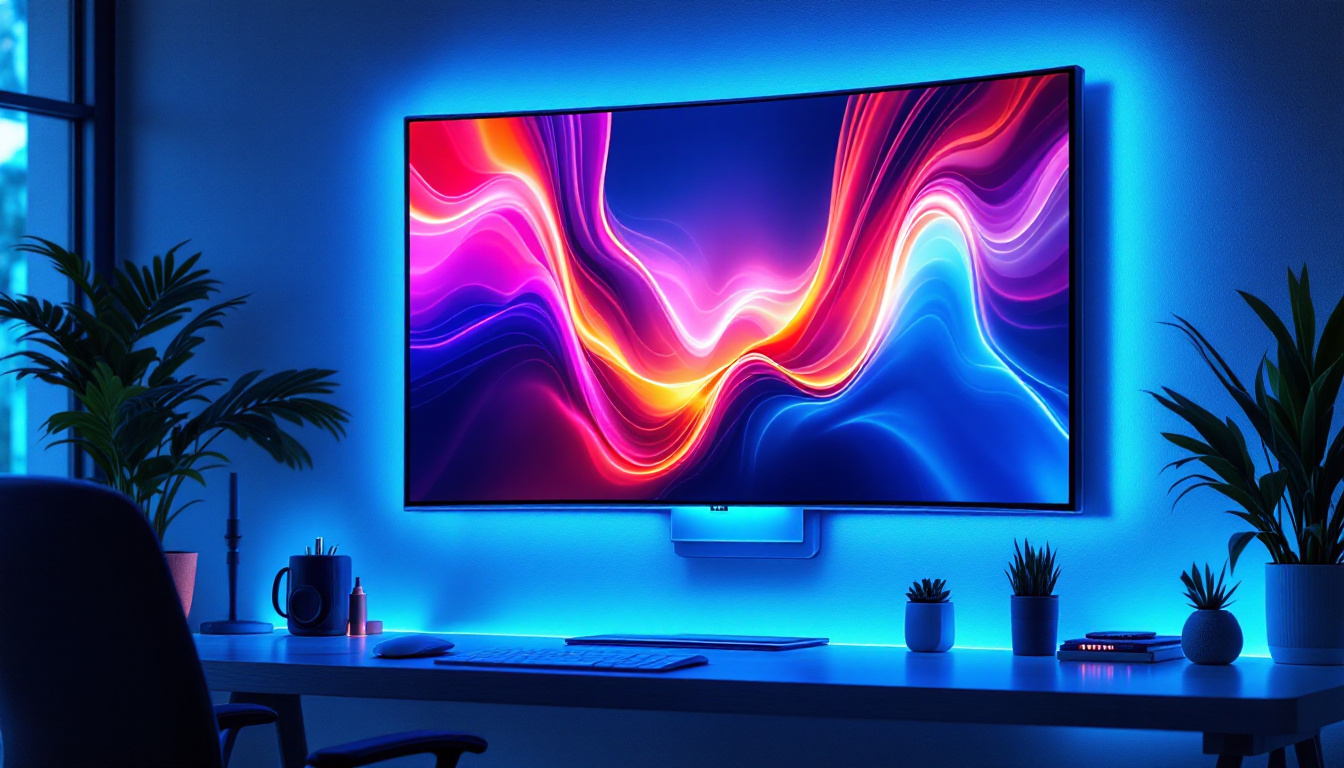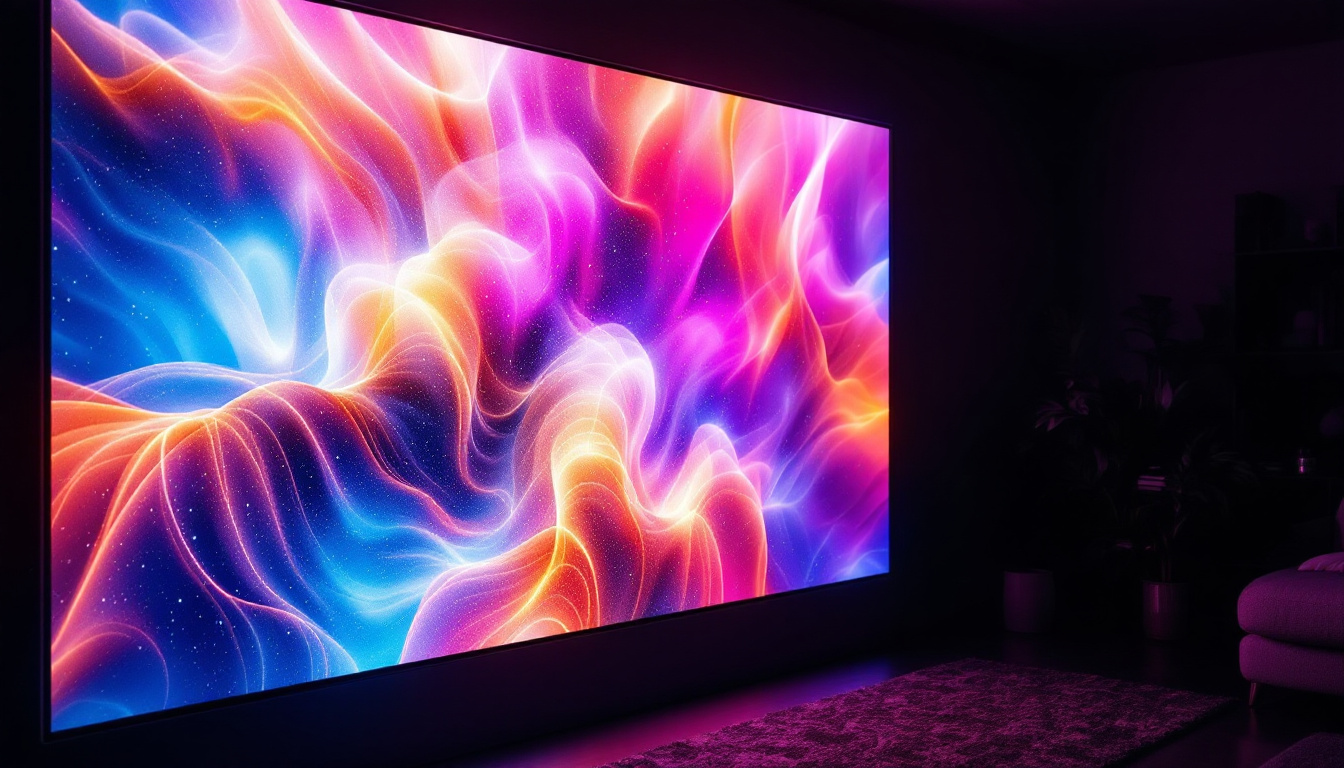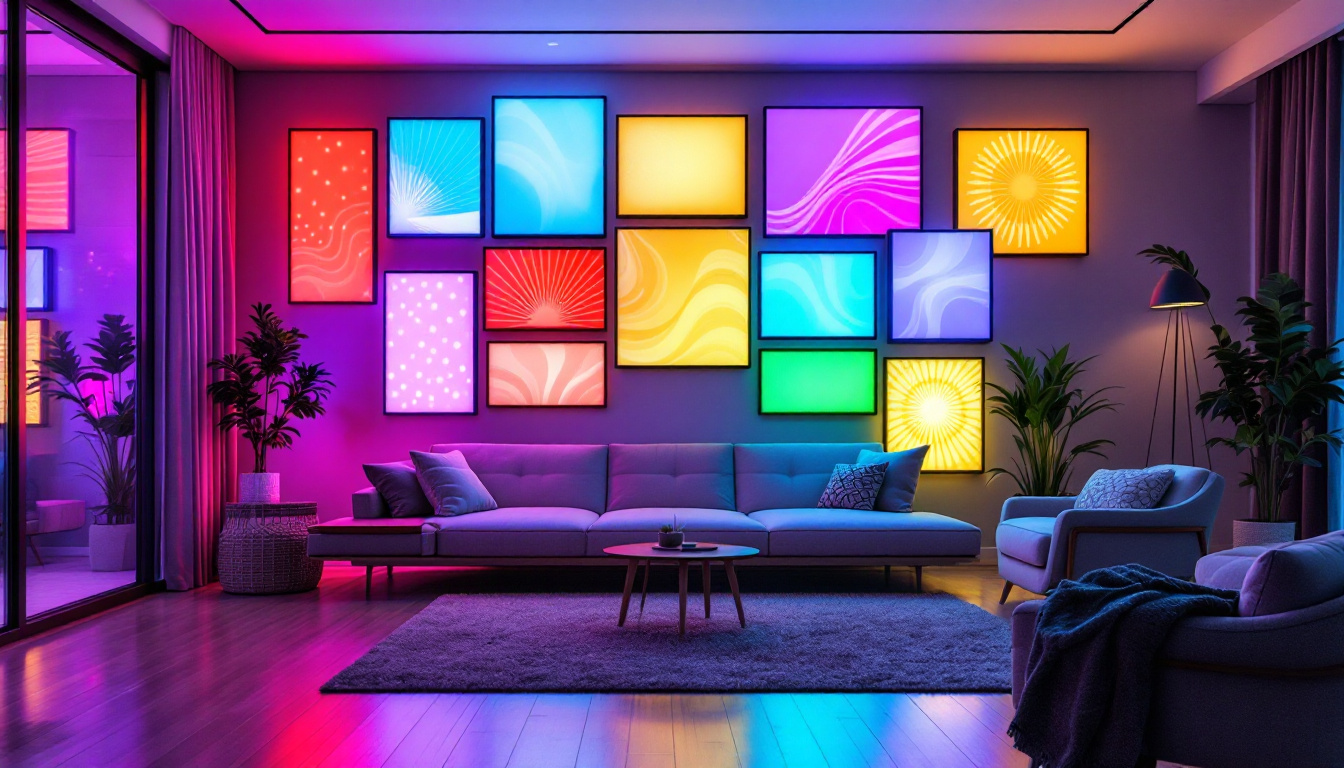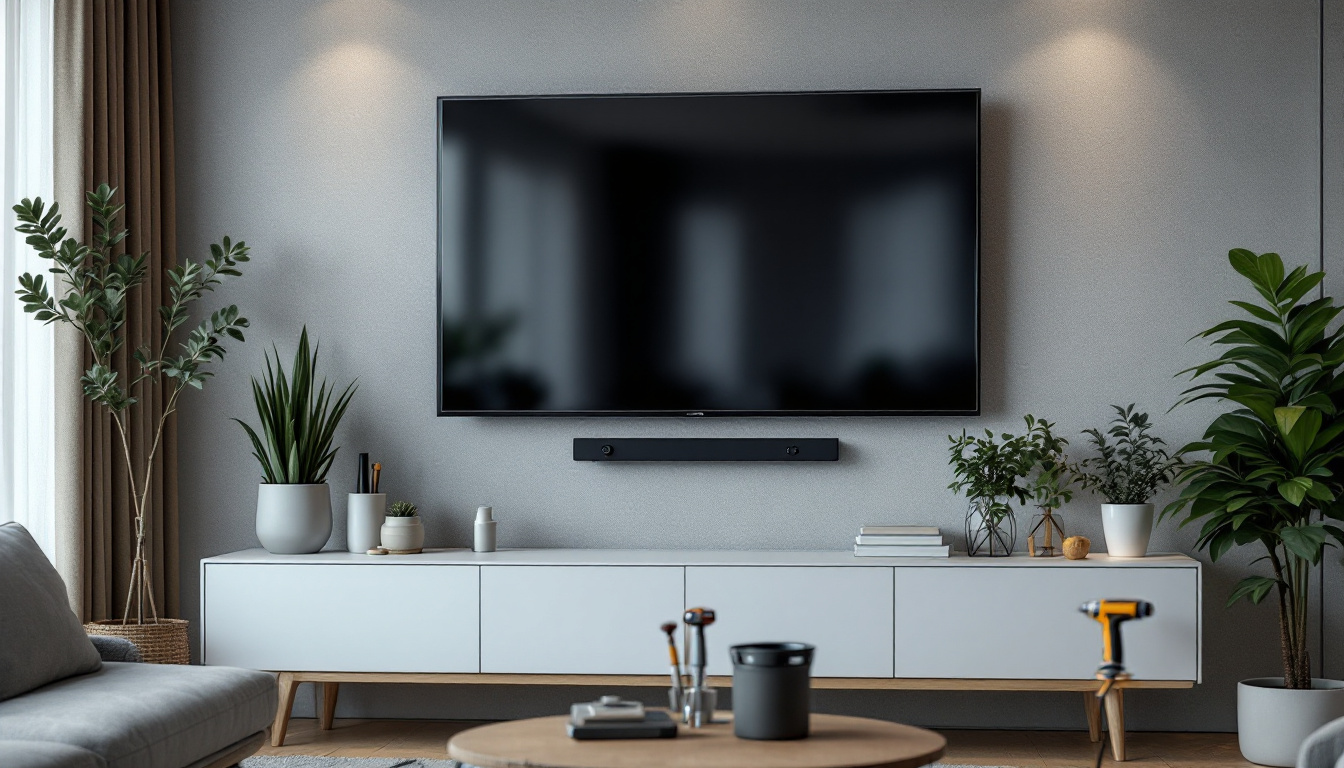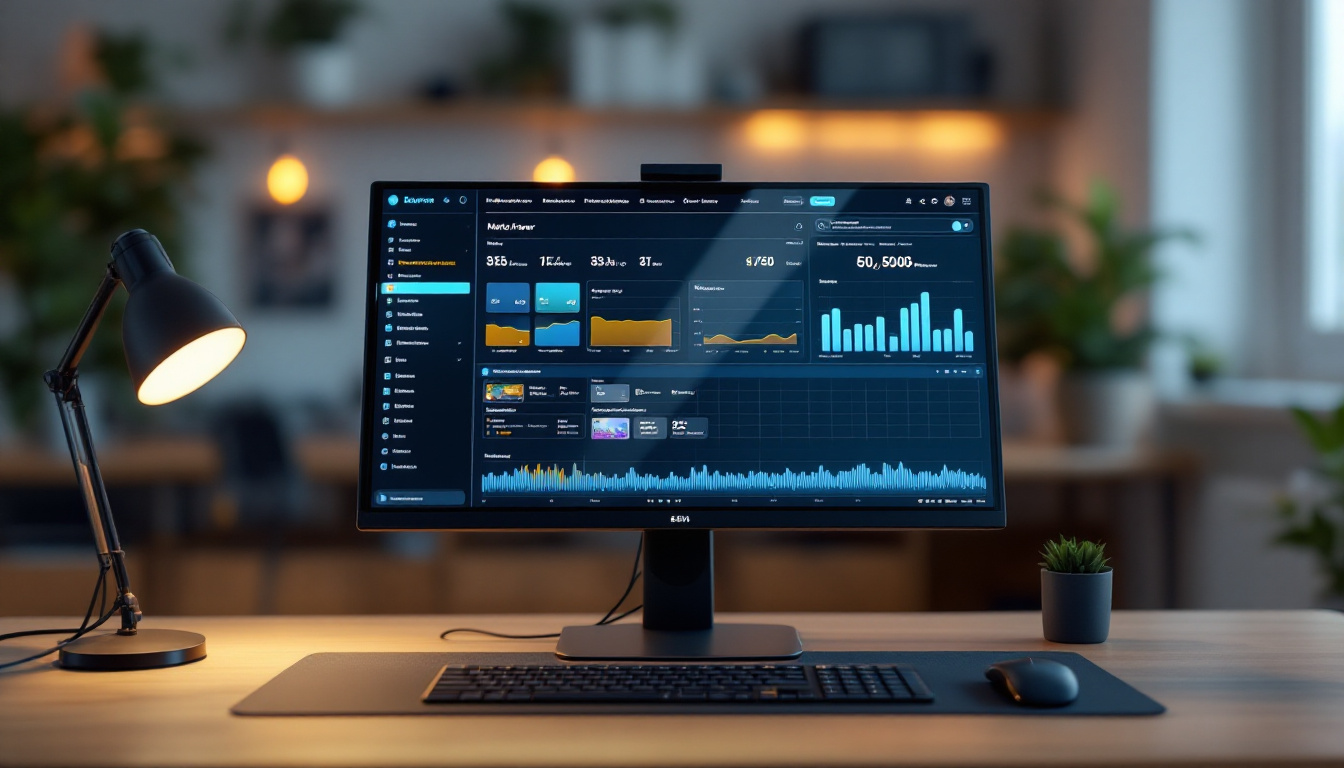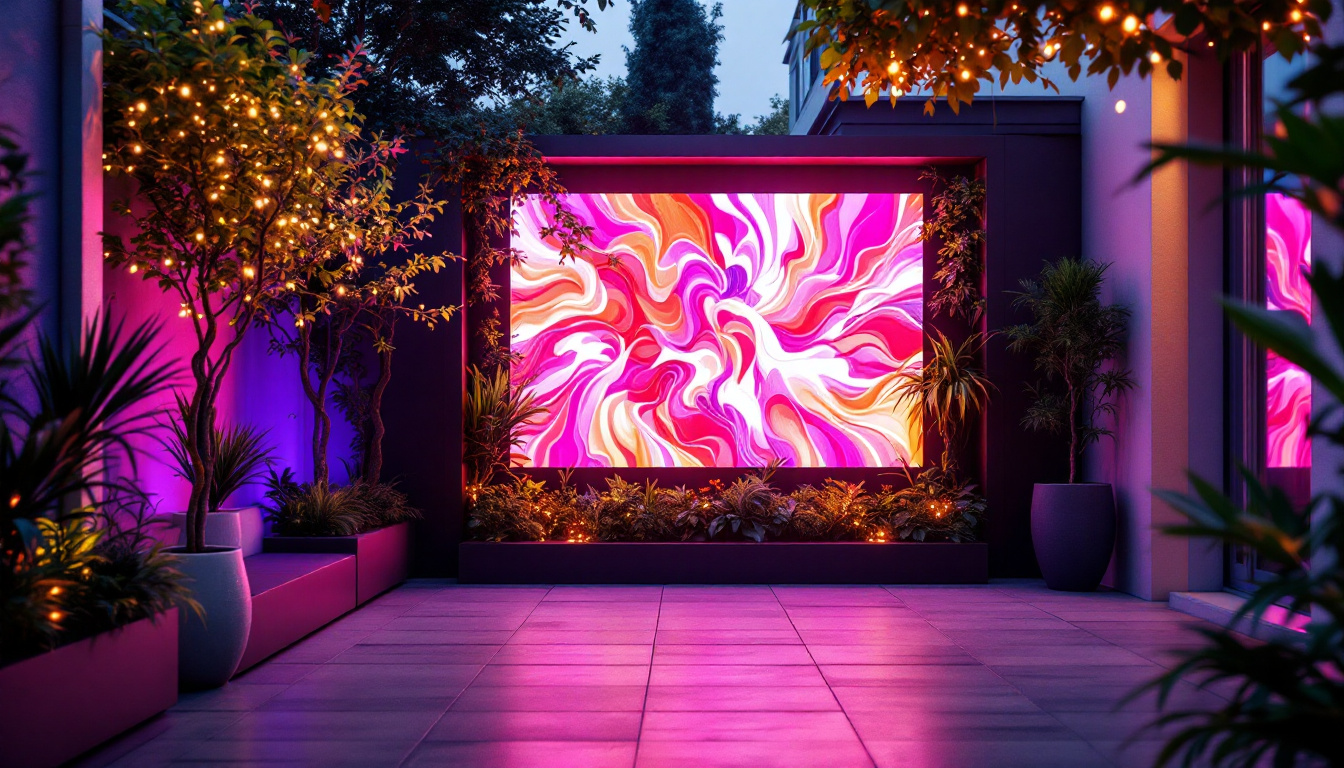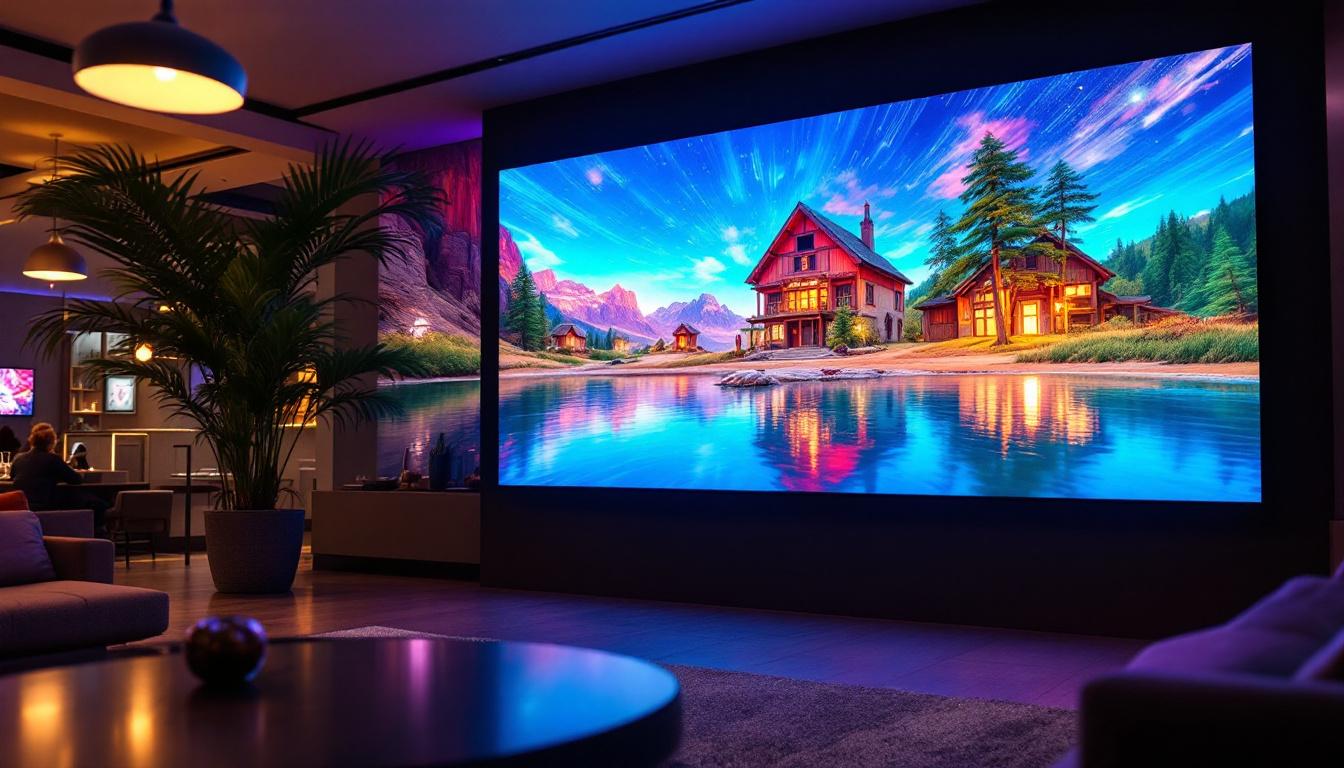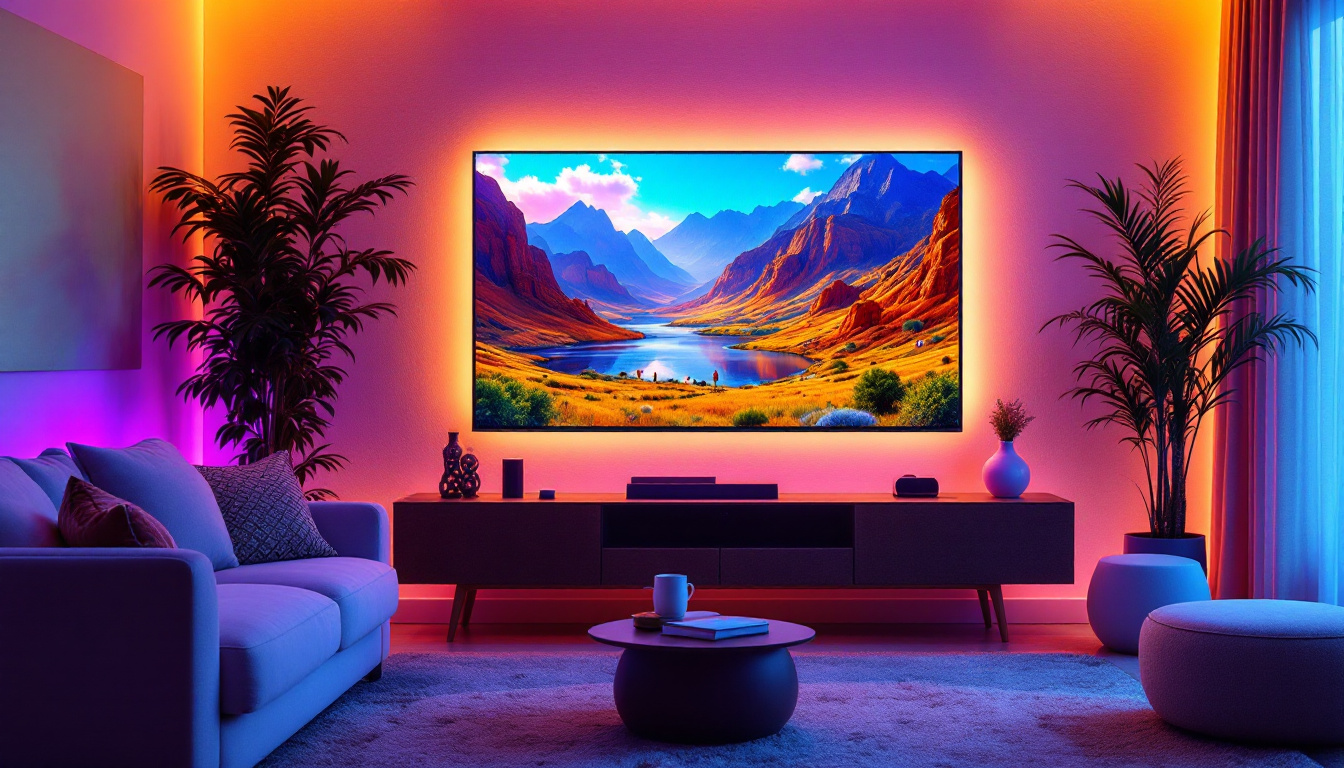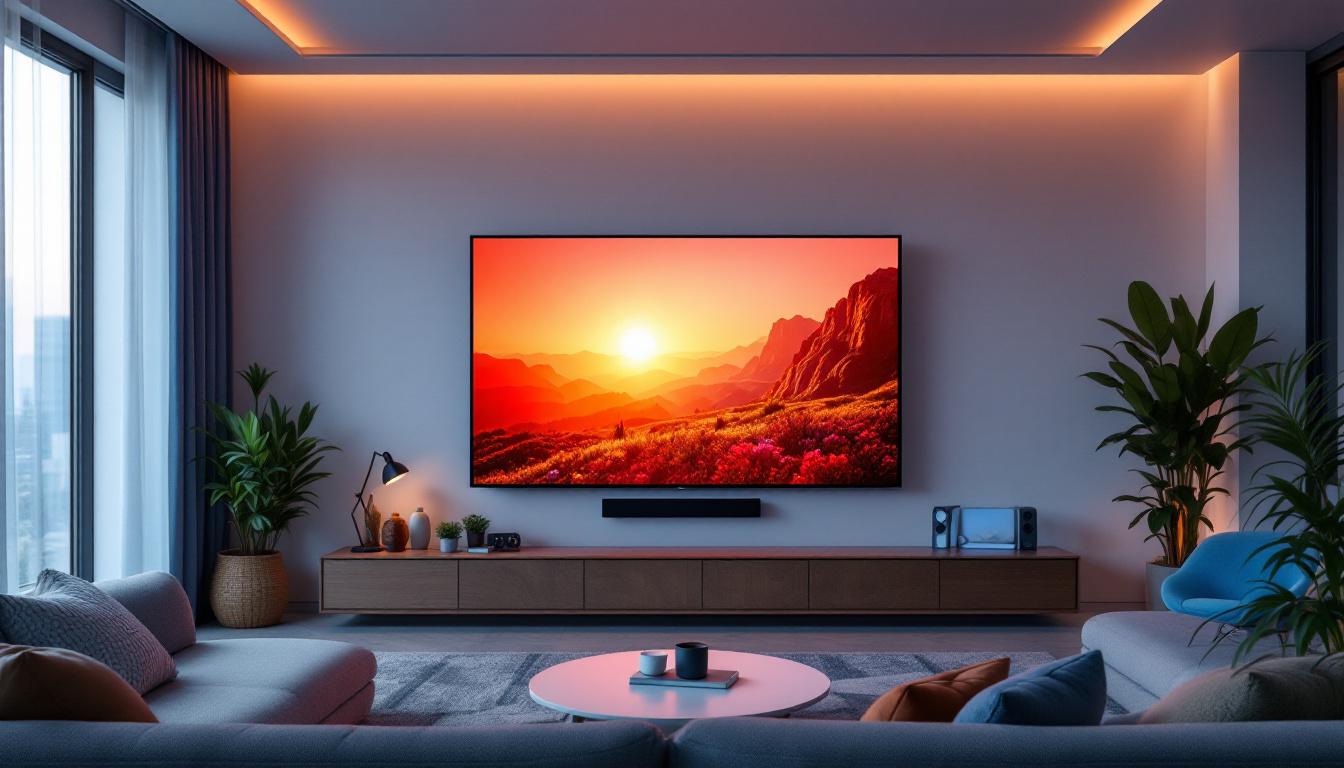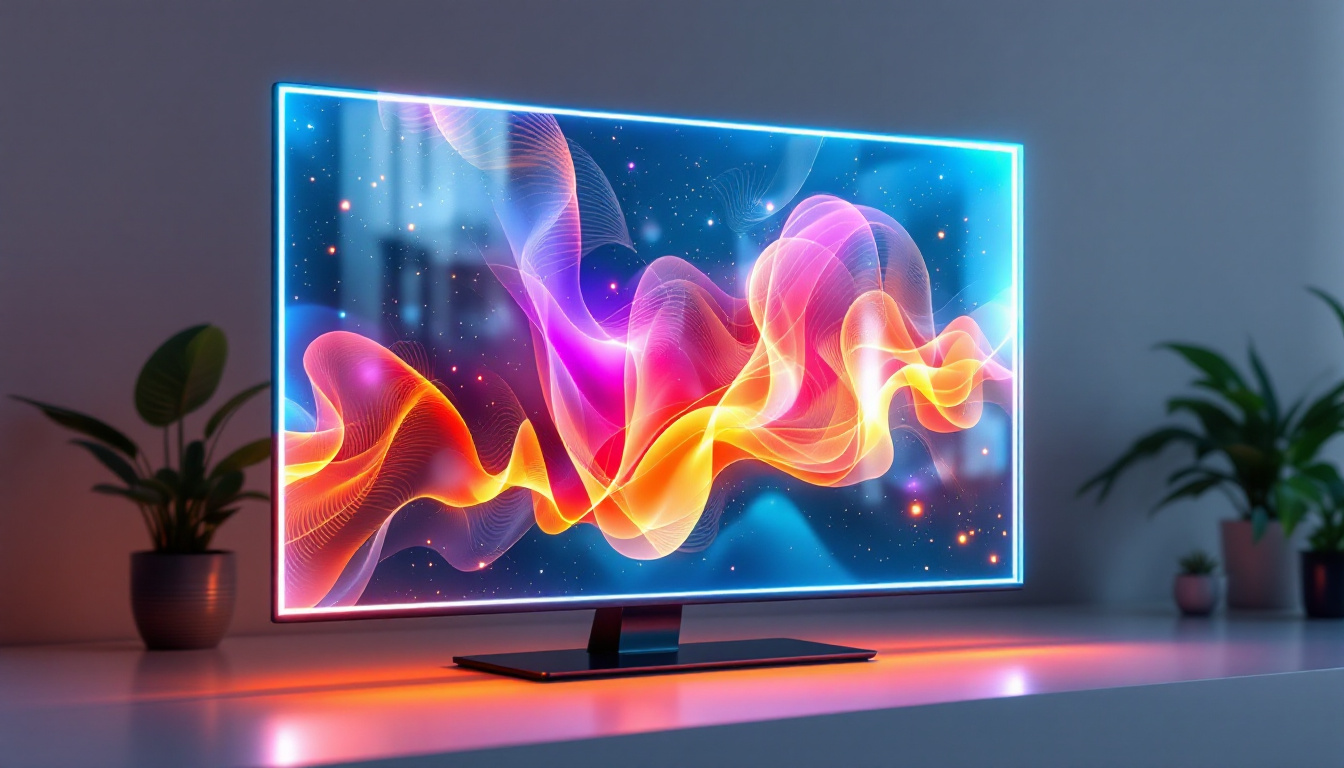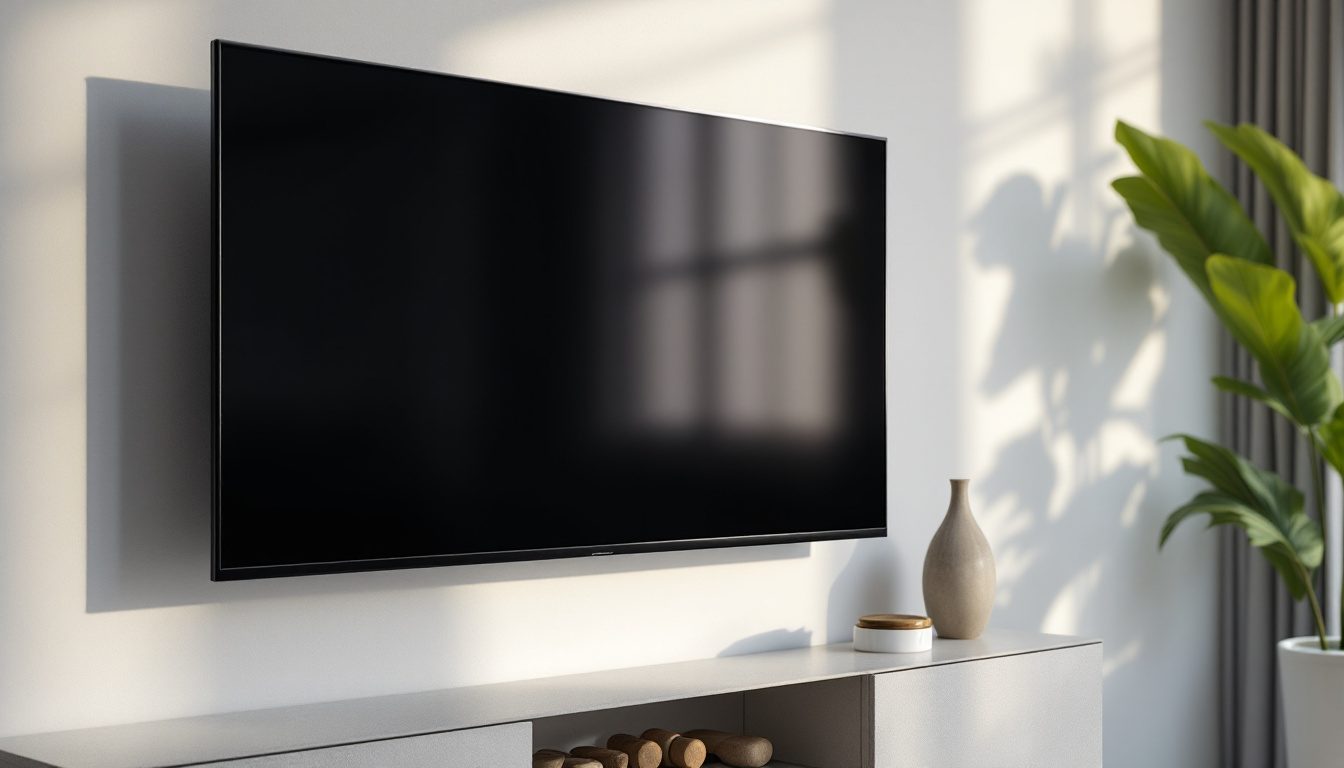In today’s digital age, the way we consume information has evolved significantly. Monitors have become an integral part of our daily lives, whether for work, entertainment, or education. Among the various types of displays available, LED monitors are particularly popular due to their superior image quality and energy efficiency. This article delves into the world of LED displays, focusing on the benefits of using a monitor with a wall mount.
Understanding LED Technology
LED, or Light Emitting Diode, technology has transformed the landscape of display screens. Unlike traditional LCDs that use fluorescent backlighting, LED monitors utilize tiny diodes to produce light, resulting in brighter and more vibrant images.
How LED Displays Work
LED displays work by using a matrix of diodes that emit light when an electrical current passes through them. This technology allows for greater control of brightness and color accuracy. The diodes can be arranged in various configurations, such as edge-lit or backlit, which affects the overall performance and viewing experience.
Edge-lit LED displays feature diodes along the edges of the screen, which helps create a slimmer profile but can sometimes result in uneven brightness. On the other hand, backlit LED displays have diodes placed directly behind the screen, providing more uniform illumination and better contrast ratios.
In addition to these configurations, there are also advanced technologies like local dimming, which allows specific areas of the screen to be dimmed or brightened independently. This feature enhances the overall dynamic range of the display, making dark scenes appear more detailed and vibrant. Furthermore, some LED displays incorporate quantum dot technology, which uses semiconductor nanocrystals to improve color accuracy and expand the color gamut, resulting in a more lifelike viewing experience.
Advantages of LED Displays
One of the primary advantages of LED displays is their energy efficiency. They consume significantly less power compared to traditional monitors, making them an environmentally friendly option. Additionally, LED monitors tend to have a longer lifespan, reducing the need for frequent replacements.
Another notable benefit is the superior image quality. LED displays offer higher contrast ratios, resulting in deeper blacks and brighter whites. This makes them ideal for watching movies, playing video games, or working on graphic design projects where color accuracy is crucial.
Moreover, LED technology has paved the way for innovations such as ultra-thin displays and flexible screens, which are becoming increasingly popular in modern design. These advancements not only enhance aesthetic appeal but also provide new possibilities for applications in various fields, from advertising to art installations. The ability to create curved or even bendable screens allows for immersive experiences that were previously unattainable with older technologies, further solidifying LED’s role as a leader in display technology.
Benefits of Using a Monitor with a Wall Mount
Mounting a monitor on the wall offers numerous advantages that enhance both functionality and aesthetics. This practice is becoming increasingly popular in homes and offices alike.
Space-Saving Solutions
One of the most significant benefits of wall-mounted monitors is the space-saving aspect. By eliminating the need for bulky stands or desks, wall mounts free up valuable floor space. This is especially beneficial in smaller rooms or offices where every inch counts.
Moreover, wall mounting allows for a cleaner and more organized workspace. Cables can be hidden behind the wall or neatly managed, creating a clutter-free environment that promotes productivity and focus.
In addition to maximizing floor space, wall-mounted monitors can also facilitate better room layout and flow. With the monitor positioned at eye level, furniture arrangements can be optimized, allowing for more effective use of space. This can be particularly advantageous in multi-purpose rooms where functionality is key, such as a home office that doubles as a guest room or a living area that accommodates both relaxation and work.
Improved Ergonomics
Proper monitor placement is essential for maintaining good posture and reducing strain on the neck and eyes. Wall mounts enable users to position their monitors at eye level, which can help prevent discomfort during long hours of use.
Adjustable wall mounts offer even more flexibility, allowing users to tilt, swivel, or extend their monitors as needed. This adaptability ensures that each user can find their optimal viewing angle, further enhancing comfort and reducing the risk of repetitive strain injuries.
Additionally, the ability to adjust the monitor’s height and angle can be particularly beneficial in shared workspaces. In environments where multiple users may be using the same monitor, such as in a family setting or collaborative office, having an adjustable wall mount allows for quick and easy customization, ensuring that everyone can work comfortably without the need for constant readjustments.
Enhanced Aesthetics
In addition to functionality, wall-mounted monitors can significantly enhance the aesthetics of a room. A sleek, mounted display can serve as a focal point, adding a modern touch to any space. This is particularly appealing in home theaters or living rooms where design is a priority.
Furthermore, wall mounts come in various styles and finishes, allowing users to choose options that complement their decor. Whether it’s a minimalist design or a more elaborate setup, there are wall mounts to fit every taste.
Moreover, wall-mounted monitors can be integrated with other design elements, such as artwork or decorative shelving, to create a cohesive look. By choosing a mount that matches the room’s color scheme or style, users can transform their monitor into a stylish feature rather than just a functional piece of equipment. This integration can elevate the overall ambiance of the space, making it more inviting and visually appealing for both residents and guests alike.
Choosing the Right Wall Mount for Your Monitor
Selecting the appropriate wall mount for a monitor is crucial for ensuring safety, stability, and optimal performance. Various factors need to be considered before making a purchase.
Monitor Size and Weight
Before choosing a wall mount, it is essential to check the monitor’s size and weight specifications. Wall mounts are designed to support specific weight limits, and exceeding these limits can lead to accidents or damage. Most manufacturers provide guidelines on the compatible sizes and weights for their mounts.
Additionally, consider the VESA (Video Electronics Standards Association) mounting pattern of the monitor. This standardized pattern ensures compatibility between the monitor and the wall mount. Most modern monitors adhere to VESA standards, but it’s always wise to double-check.
Types of Wall Mounts
There are several types of wall mounts available, each catering to different needs and preferences. Fixed mounts are the simplest option, holding the monitor securely against the wall without any adjustment capabilities. These are ideal for users who prefer a permanent setup.
Tilting mounts allow for some degree of angle adjustment, which can help reduce glare from windows or overhead lights. Full-motion mounts offer the most versatility, enabling users to swivel, tilt, and extend their monitors for optimal viewing angles. This type is particularly useful in multi-user environments or spaces where the viewing position may change frequently.
Installation Considerations
Proper installation is vital for safety and performance. It is advisable to follow the manufacturer’s instructions carefully, ensuring that the wall mount is securely attached to wall studs or appropriate anchors. If unsure, hiring a professional installer can provide peace of mind and ensure the setup is done correctly.
Setting Up Your Monitor with a Wall Mount
Once the right wall mount is selected, the next step is setting up the monitor. This process can be straightforward if approached methodically.
Gathering Necessary Tools
Before starting the installation, gather all the necessary tools. Typically, you will need a drill, a level, a stud finder, and a screwdriver. Having everything on hand will streamline the installation process and minimize interruptions.
Measuring and Marking the Wall
Begin by determining the desired height for the monitor. A common guideline is to position the center of the screen at eye level when seated. Use a level to mark the mounting points accurately, ensuring that the monitor will hang straight.
Once the marks are made, use a stud finder to locate the wall studs. Mounting the monitor directly into studs is crucial for stability. If studs are not available in the desired location, use appropriate wall anchors that can support the weight of the monitor and mount.
Mounting the Monitor
With the wall mount securely attached to the wall, the next step is to attach the monitor. This usually involves screwing the mounting plate onto the back of the monitor and then hanging it on the wall mount. Ensure that all connections are tight and secure before releasing the monitor.
After the monitor is mounted, take a moment to adjust the angle and position as needed. This is the time to ensure that the viewing experience is comfortable and free from glare.
Maintaining Your Wall-Mounted Monitor
Once the monitor is installed, regular maintenance is essential to ensure longevity and optimal performance. Here are some tips to keep in mind.
Cleaning the Screen
Dust and fingerprints can accumulate on the screen over time, affecting visibility. Use a microfiber cloth to gently wipe the screen, avoiding harsh chemicals that can damage the display. For stubborn spots, a mixture of water and vinegar can be used, but always apply it to the cloth rather than directly on the screen.
Checking Connections
Periodically check the connections between the monitor and any external devices. Loose cables can lead to display issues or interruptions. Ensure that all cables are securely connected and in good condition.
Adjusting Settings
Monitor settings can significantly impact the viewing experience. Take the time to adjust brightness, contrast, and color settings to suit personal preferences and the lighting conditions of the room. Many monitors also offer preset modes for different activities, such as gaming or reading, which can enhance the overall experience.
Conclusion
In summary, a monitor with a wall mount offers numerous benefits, including space-saving solutions, improved ergonomics, and enhanced aesthetics. Understanding LED technology and the advantages of wall mounting can help users make informed decisions when selecting a monitor and its mounting solution.
By considering factors such as size, weight, and installation requirements, individuals can ensure a safe and effective setup. Regular maintenance and adjustments will further enhance the longevity and performance of the monitor, making it a valuable addition to any home or office environment.
As technology continues to evolve, the integration of monitors into our daily lives will only increase. Embracing modern solutions like wall-mounted LED displays can lead to a more organized, efficient, and visually appealing space.
Discover LumenMatrix’s Innovative LED Displays
Ready to elevate your space with the latest in LED display technology? Look no further than LumenMatrix, a pioneer in crafting visually stunning and technologically advanced LED solutions. From immersive indoor environments to dynamic outdoor settings, our range of products, including Indoor and Outdoor LED Wall Displays, Vehicle LED Displays, and more, are designed to transform your visual communication and captivate your audience. Check out LumenMatrix LED Display Solutions today and experience the future of digital signage.

